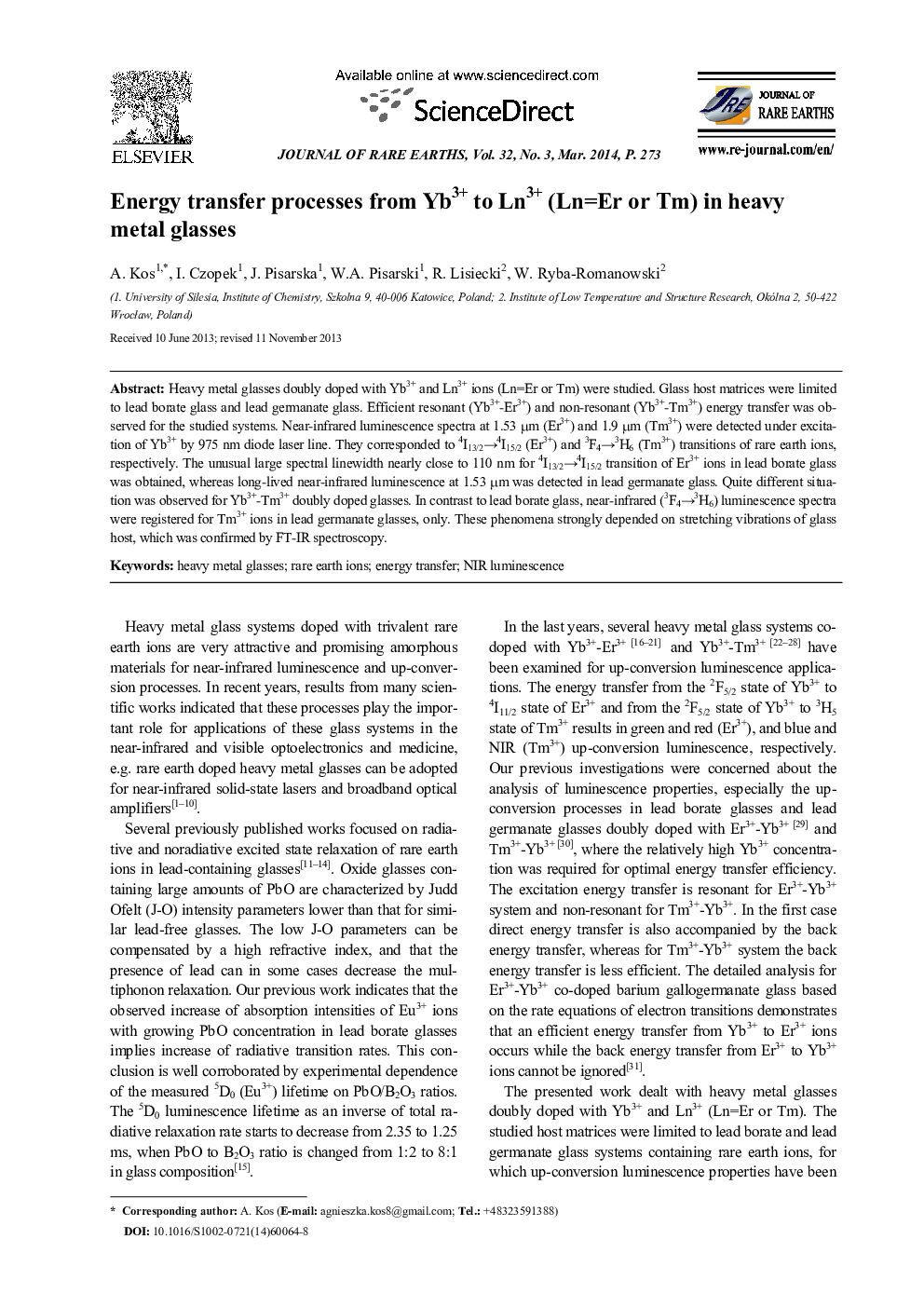| Article ID | Journal | Published Year | Pages | File Type |
|---|---|---|---|---|
| 1259489 | Journal of Rare Earths | 2014 | 4 Pages |
Heavy metal glasses doubly doped with Yb3+ and Ln3+ ions (Ln=Er or Tm) were studied. Glass host matrices were limited to lead borate glass and lead germanate glass. Efficient resonant (Yb3+-Er3+) and non-resonant (Yb3+-Tm3+) energy transfer was observed for the studied systems. Near-infrared luminescence spectra at 1.53 μm (Er3+) and 1.9 μm (Tm3+) were detected under excitation of Yb3+ by 975 nm diode laser line. They corresponded to 4I13/2→4I15/2 (Er3+) and 3F4→3H6 (Tm3+) transitions of rare earth ions, respectively. The unusual large spectral linewidth nearly close to 110 nm for 4I13/2→4I15/2 transition of Er3+ ions in lead borate glass was obtained, whereas long-lived near-infrared luminescence at 1.53 μm was detected in lead germanate glass. Quite different situation was observed for Yb3+-Tm3+ doubly doped glasses. In contrast to lead borate glass, near-infrared (3F4→3H6) luminescence spectra were registered for Tm3+ ions in lead germanate glasses, only. These phenomena strongly depended on stretching vibrations of glass host, which was confirmed by FT-IR spectroscopy.
Near-infrared luminescence of Er3+ and Tm3+ ions in heavy metal glasses under excitation of Yb3+Figure optionsDownload full-size imageDownload as PowerPoint slide
